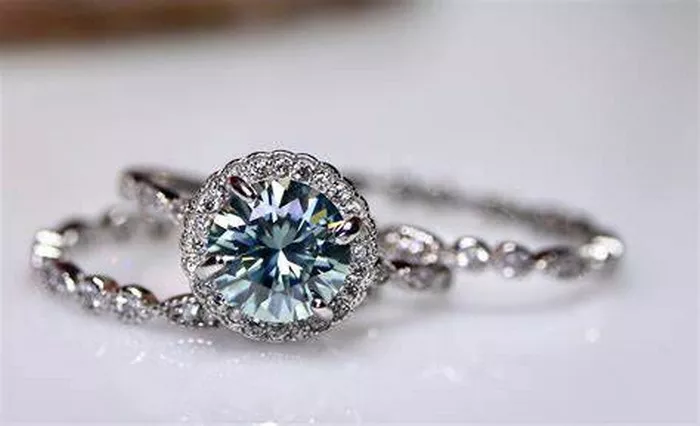In the realm of gemstones, moissanite stands out for its affordability. This striking gemstone, initially discovered in 1893 by Henri Moissan, has gained immense popularity as a diamond alternative due to its brilliance, durability, and lower price point. However, many consumers wonder: why are moissanites so cheap compared to traditional diamonds? Unraveling this question requires delving into various factors spanning from the gemstone’s composition to market dynamics and consumer preferences.
The Composition and Sourcing of Moissanites
Understanding the cost of moissanites begins with their composition. Unlike diamonds, which are formed from carbon, moissanites are composed of silicon carbide (SiC). This synthetic gemstone is created through a complex process involving high temperatures and pressure, making it more readily available compared to naturally occurring diamonds.
Additionally, moissanites can be produced in a laboratory setting, which significantly reduces production costs compared to mining natural diamonds. Lab-created moissanites offer consistent quality and clarity, eliminating the need for extensive mining operations and associated environmental impacts.
Moreover, the ethical concerns surrounding diamond mining, including issues like human rights violations and environmental degradation, have prompted many consumers to seek alternatives such as moissanites. This shift in consumer preferences has further contributed to the affordability of moissanite jewelry.
Market Dynamics and Supply Chain Efficiency
Another key factor influencing the price of moissanites is market dynamics and supply chain efficiency. As moissanite continues to gain popularity as a diamond alternative, manufacturers have scaled up production to meet the growing demand. This increased supply has led to economies of scale, driving down production costs and subsequently reducing the retail price of moissanite jewelry.
Furthermore, the relatively low cost of moissanites compared to diamonds has positioned them as an attractive option for consumers seeking high-quality gemstones at a fraction of the price. This competitive pricing strategy has further fueled demand for moissanite jewelry, creating a virtuous cycle that sustains its affordability in the market.
Moreover, advancements in technology have streamlined the manufacturing process of moissanites, allowing for greater precision and efficiency. From crystal growth to faceting and polishing, modern techniques enable manufacturers to produce moissanite gemstones with exceptional clarity and brilliance at a lower cost.
Consumer Perception and Market Positioning
Perception plays a crucial role in shaping consumer behavior and willingness to pay for a product. While diamonds have long been synonymous with luxury and romance, the rising popularity of moissanites has challenged traditional notions of gemstone value. With comparable brilliance and durability, moissanites offer a compelling alternative to diamonds at a fraction of the price.
Furthermore, the affordability of moissanites appeals to a broader demographic, including millennials and Gen Z consumers who prioritize value and sustainability in their purchasing decisions. This demographic shift has reshaped the jewelry market, driving demand for alternative gemstones like moissanites and influencing pricing dynamics.
Additionally, the marketing and branding strategies employed by moissanite manufacturers and retailers play a significant role in shaping consumer perceptions and market positioning. By highlighting the unique characteristics and benefits of moissanites, such as their eco-friendly production and affordability, brands can attract consumers seeking value-driven and socially conscious options.
Conclusion
In conclusion, the affordability of moissanites can be attributed to a combination of factors, including their composition, manufacturing process, market dynamics, and consumer preferences. As a synthetic gemstone composed of silicon carbide, moissanites offer a cost-effective alternative to natural diamonds.
Moreover, advancements in technology and production techniques have further reduced the cost of moissanites while maintaining their exceptional quality and brilliance. This, coupled with shifting consumer perceptions and market positioning, has cemented moissanites as a popular choice for individuals seeking affordable yet stunning jewelry options.
Ultimately, the economics of moissanites underscore the complex interplay between supply and demand, production efficiency, and consumer preferences in shaping the pricing dynamics of gemstones. As moissanites continue to captivate the market with their beauty and value, they stand as a testament to the evolving landscape of the jewelry industry.
FAQs
1. Is moissanite worth buying?
Absolutely! Moissanite is a stunning gemstone known for its brilliance, fire, and durability. Many people choose moissanite as an alternative to traditional diamonds due to its exceptional beauty and lower cost. It offers excellent value for money, often costing significantly less than diamonds of similar size and quality. Additionally, moissanite is ethically sourced, making it an appealing option for those concerned about the environmental and social impacts of diamond mining.
2. What is the downside of moissanite?
While moissanite has numerous advantages, it’s essential to consider its potential downsides. One common concern is that moissanite may lack the status or prestige associated with diamonds. Some individuals may prefer the symbolism or cultural significance of diamonds, which could influence their decision. Additionally, although moissanite is highly durable, it is not as hard as diamonds, making it slightly more prone to scratching under certain conditions.
3. Does moissanite look fake?
Not at all! Moissanite is renowned for its diamond-like appearance, featuring exceptional brilliance and sparkle. In fact, to the untrained eye, it can be challenging to distinguish moissanite from diamonds. Its remarkable optical properties ensure that it looks stunning in various lighting conditions, whether indoors or outdoors. With its near-colorless appearance and impressive clarity, moissanite consistently delivers a beautiful and realistic gemstone option.
4. How much is 1 carat moissanite worth?
The cost of a 1-carat moissanite can vary depending on factors such as its color, clarity, cut, and brand. Generally, you can expect to pay significantly less for a 1-carat moissanite compared to a 1-carat diamond of similar quality. Prices can range from a few hundred to a few thousand dollars, offering substantial savings compared to traditional diamonds. It’s essential to research reputable sellers and compare prices to ensure you’re getting the best value for your budget.

